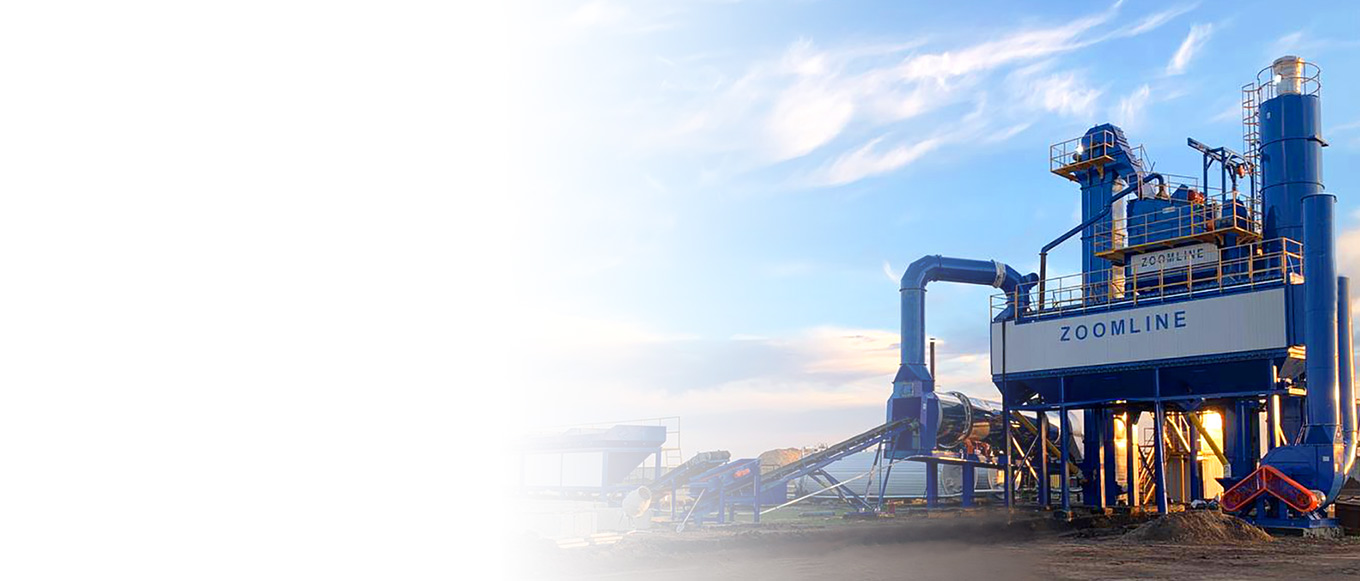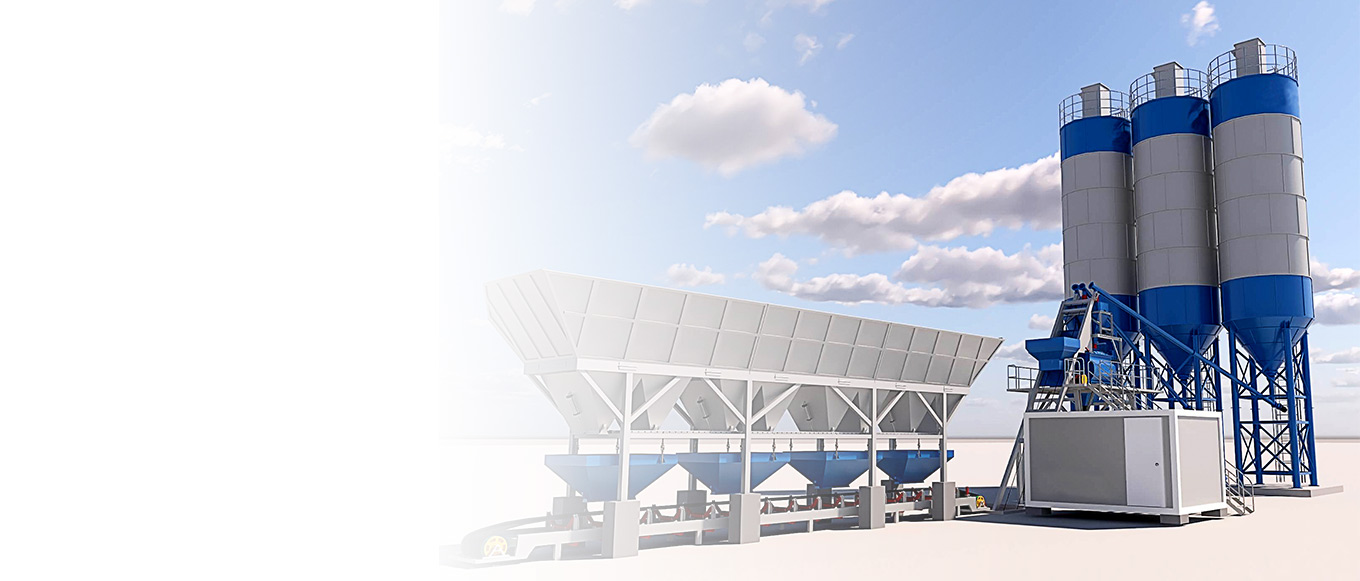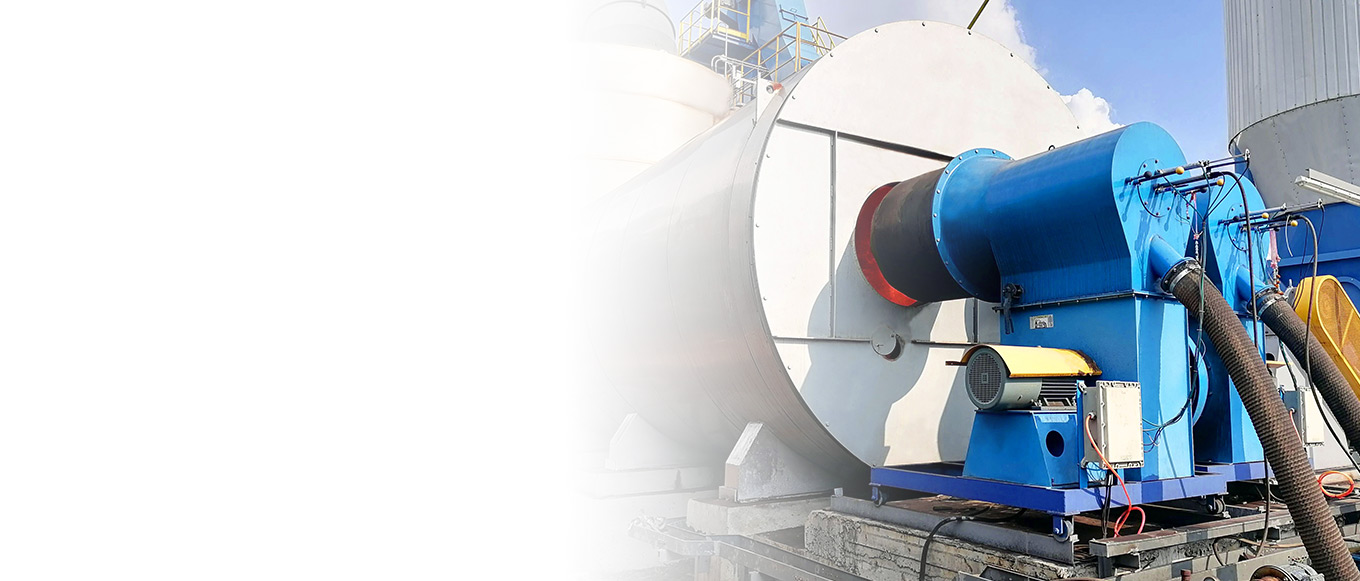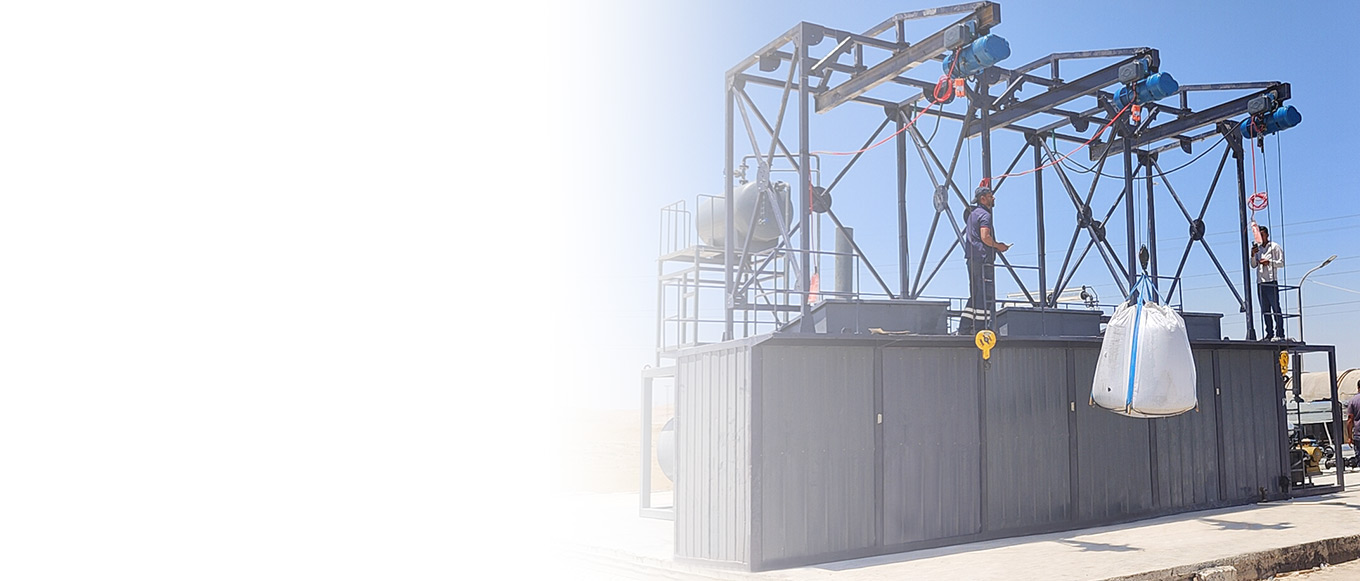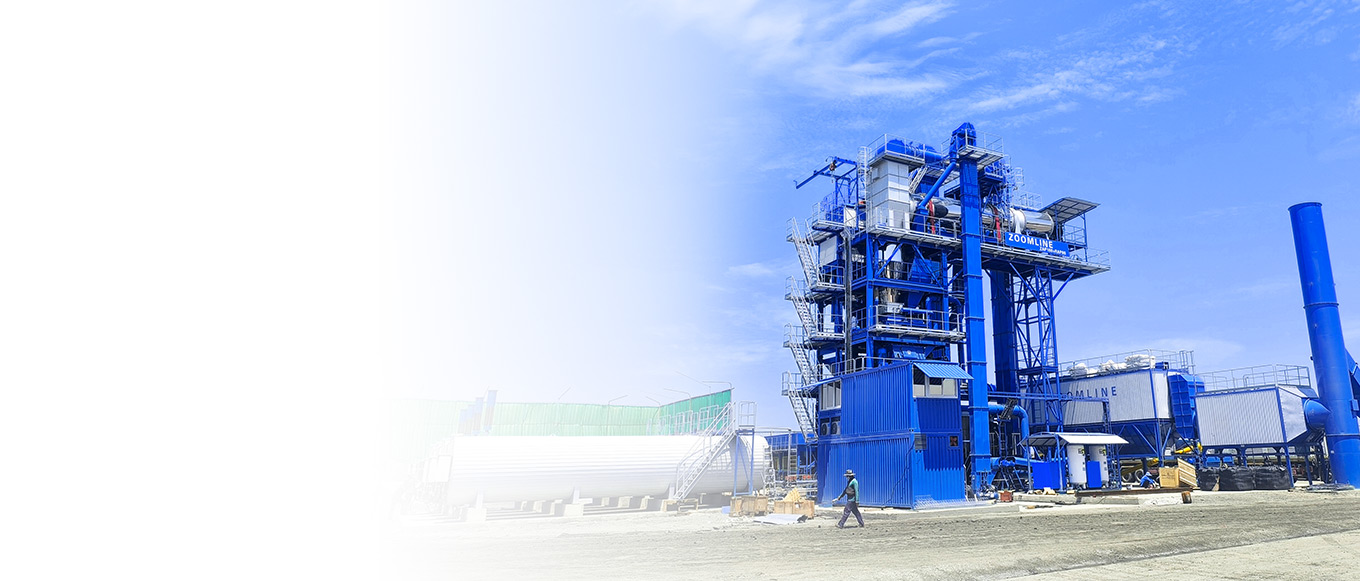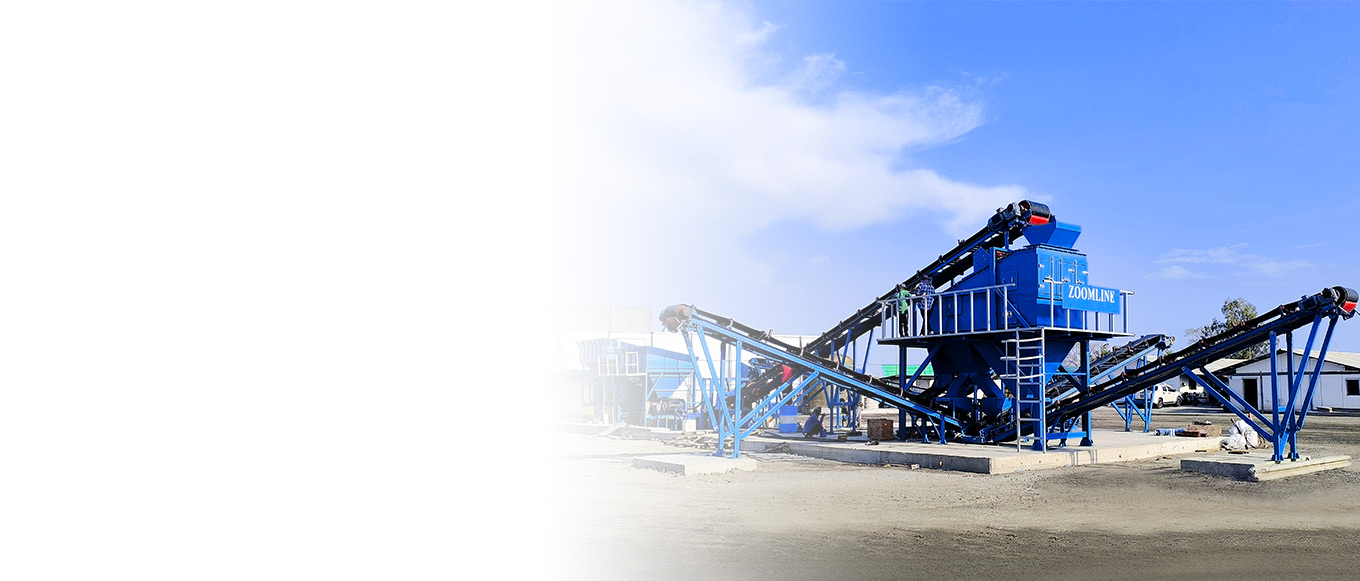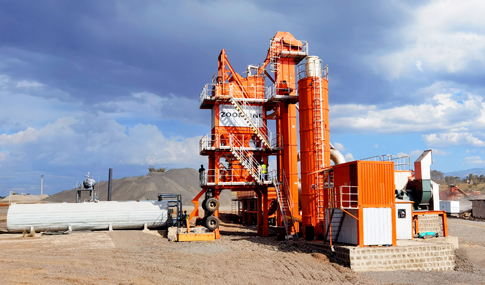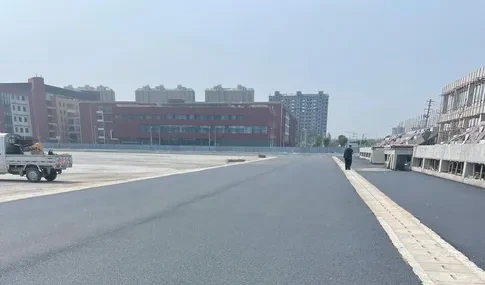In asphalt mixing plant operations, dust pollution is an often underestimated “invisible threat” with far-reaching impacts. Environmentally, untreated dust contaminates air, soil, and water, disrupting ecosystems. For worker health, prolonged exposure increases risks of respiratory diseases, including potential pneumococcal infections. Compliance-wise, exceeding strict industrial dust emission standards can lead to heavy fines or production halts.
Dust is generated across nearly all production stages: aggregate loading and transport, high-temperature release during drying/heating, material collisions in mixing, and even final product storage and loading. These emissions harm product quality, reduce equipment efficiency, and impede sustainable development.
This article offers asphalt mixing plant operators practical dust control solutions, covering key control methods, applicable technical equipment, daily maintenance techniques, and system selection criteria—aiming to effectively resolve dust issues and enhance environmental protection, safety, and operational efficiency.
Sources and Types of Dust in Asphalt Mixing Plants
Primary Sources of Dust
Dust in asphalt mixing plants does not arise spontaneously but is closely related to multiple stages of the production process:
Aggregate Loading, Unloading, and Transportation: During the transportation of aggregates from the aggregate yard to the storage silo or between different pieces of equipment, dust is generated due to factors such as impact from height differences and mechanical vibrations. Especially dry sand and gravel aggregates are more prone to dispersion under wind influence.
Drying and heating process: In drum dryers, aggregates are heated by high-temperature flue gas. As moisture evaporates, fine particles on the aggregate surface are carried by airflow, forming dust. If fuel combustion is incomplete, black smoke and dust may mix, exacerbating pollution.
Mixing stage: During high-speed mixing of hot aggregates, asphalt, mineral powder, and other materials in the mixing drum, friction and compression between materials cause some fine particles to detach, forming dust that is expelled through the mixing drum’s exhaust port.
Product storage and loading: When asphalt mixture is stored in the finished product silo, dust may escape if the silo is not properly sealed. During loading, the impact caused by the falling mixture may also cause dust to disperse into the air.
Types of dust particles
Based on particle size and hazard level, dust from asphalt mixing plants can be divided into two categories:
Coarse dust: These particles are larger (typically with a diameter greater than 10 microns) and visible to the naked eye. They primarily originate from the mechanical crushing and collision of aggregates. They settle quickly in the air, primarily affecting the cleanliness of the work environment and causing significant wear and tear on equipment, but posing relatively minor risks to the human respiratory system.
Fine dust: This includes PM10 (diameter ≤ 10 microns) and PM2.5 (diameter ≤ 2.5 microns), which are microscopic particles invisible to the naked eye. Fine dust can remain suspended in the air for extended periods, easily inhaled into the lungs and even entering the bloodstream, potentially causing severe conditions such as asthma, pneumonia, and lung cancer. Additionally, PM2.5 contributes to persistent atmospheric pollution and is a key focus of environmental regulatory oversight.
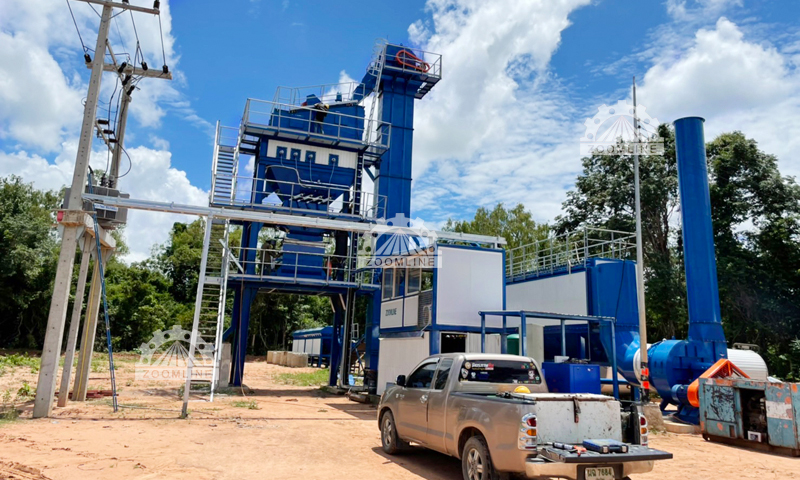
The Importance of Dust Control
Meeting Environmental Compliance Requirements
Countries are imposing increasingly stringent standards on industrial dust emissions. For example, China’s ‘Emission Standards for Air Pollutants from Asphalt Concrete Mixing Plants’ (GB 28662-2012) clearly stipulates dust emission concentration limits. Asphalt mixing plants that fail to effectively control dust emissions may face penalties from environmental protection authorities, including fines, orders to rectify within a specified time-frame, and in severe cases, revocation of their production license, which directly impacts the survival of the enterprise. Additionally, with the advancement of the “dual carbon” goals, environmental compliance has become a basic prerequisite for companies to participate in market competition. Non-compliant companies will be excluded from project bidding.
Ensuring Health and Safety
The health hazards of dust to workers cannot be ignored. Long-term exposure to dust can lead to occupational diseases such as pneumoconiosis and silicosis, which not only affect workers’ quality of life but also increase the company’s medical costs and labor risks. More seriously, certain dust particles (such as coal dust or dust formed by asphalt volatiles) may explode under specific concentration levels and conditions (such as exposure to open flames or static electricity), posing a fatal threat to the safety of the entire factory premises. Effective dust control is a core measure for companies to fulfill their social responsibilities and ensure the safety of their employees.
Improving operational efficiency
If dust is not promptly addressed, it can accumulate on critical components such as motors, bearings, and instruments, impairing equipment cooling and precision, leading to frequent malfunctions, reduced service life, increased maintenance costs, and extended downtime. Additionally, dust dispersion can result in the loss of raw materials like aggregates, thereby raising production costs. Furthermore, a clean and organized production environment enhances workers’ efficiency and motivation, indirectly contributing to improved business performance.
Key Dust Control Methods for Asphalt Mixing Plants
Bag-house Dust Collectors
Bag-house dust collectors are currently one of the most widely used and efficient dust control devices in asphalt mixing plants. Their operating principle is as follows: dust-laden air enters the dust collector, passes through filter bags made of special filter fabric (such as polyester or polypropylene), and dust particles are trapped on the surface of the filter bags. The purified air is then discharged through the outlet. As dust accumulates on the surface of the filter bags, regular cleaning is required using methods such as pulse jet cleaning to ensure the equipment continues to operate efficiently.
In terms of maintenance, it is necessary to regularly inspect the filter bags for damage or aging, and replace them promptly if any issues are found. Additionally, the accumulated dust in the hopper must be cleaned to prevent blockages. The primary advantage of baghouse dust collectors is their ability to capture fine dust particles such as PM10 and PM2.5 with an efficiency of over 99%, easily meeting stringent environmental standards.
Cyclone Dust Collectors
Cyclone dust collectors operate based on the principle of centrifugal force: dust-laden air enters the cylindrical section of the dust collector tangentially, and during rotation, centrifugal force causes dust particles with a density greater than air to be flung toward the cylinder wall. The dust then falls along the cylinder wall into the ash hopper, while the purified gas is discharged through the central exhaust pipe.
However, cyclone dust collectors have relatively low capture efficiency for fine dust particles (typically 50%-80%), making them more suitable as ‘pre-treatment equipment’ to remove coarse dust particles from the airflow, thereby reducing the load on subsequent bag-house dust collectors and extending the service life of the filter bags. Their advantages include simple structure, low cost, and ease of maintenance, making them suitable for applications with high dust concentrations (such as the outlet of a dryer).
Water Spray Systems
Water spray systems suppress dust dispersion by spraying fine water mist onto dust sources, causing dust particles to combine with water droplets, form larger particles, and settle. This system is particularly suitable for open dust sources such as transfer points on aggregate conveyor belts, silo discharge openings, and loading areas.
Its advantages include low investment costs, flexible installation, and rapid suppression of visible coarse dust; however, its limitations are also evident: it has limited effectiveness in controlling fine dust, may increase aggregate moisture content (affecting asphalt mix ratios), and may cause icing issues in cold regions during winter, requiring the use of insulation or heating devices.
Enclosure and Sealing Measures
‘Source control’ is the key to dust management. By enclosing and sealing production equipment, dust leakage can be effectively reduced. For example, fully enclosing aggregate conveyor belts, vibrating screens, and crushing equipment to create a relatively sealed space; sealing the inlets and outlets of silos, mixing drums, and finished product silos using rubber seals, covers, etc., to prevent dust leakage.
Additionally, installing negative pressure ventilation systems in enclosed areas to draw dust-laden air into dust collectors for treatment can further reduce the risk of dust dispersion. This method fundamentally reduces wind-borne dust, particularly suitable for outdoor work areas or environments with strong winds.
Reasonable Material Handling Procedures
In addition to relying on equipment, standardized operating procedures can also effectively reduce dust generation:
Reduce aggregate drop height: During aggregate loading, unloading, and transfer, minimize the height of material drop (e.g., using chutes for cushioning) to reduce dust generated by impact.
Use enclosed storage facilities: Aggregates, mineral powders, and other raw materials should be stored in enclosed silos or bunkers. Dust collectors should be installed on the silo tops, and sealed valves should be installed at the bottom discharge ports.
Control material moisture: For dry aggregates, appropriately sprinkle water (with strict control of water volume) to increase particle adhesion and reduce dust dispersion.
Daily Maintenance Tips for Dust Control Systems
To ensure the long-term effective operation of dust control equipment, daily maintenance is essential:
Regularly inspect filter bags and seals: Filter bags are the core components of bag-house dust collectors. They should be inspected weekly for damage, blockages, or signs of aging, and replaced promptly if any issues are found. Additionally, inspect the seals on the equipment’s doors, flanges, and other components to ensure there are no air leaks, preventing dust-laden airflow from bypassing the system.
Inspect for pipeline leaks: Cracks or loose connections in dust conveyance pipelines can cause dust-laden airflow leaks, reducing dust collection efficiency. Conduct a comprehensive inspection of pipelines monthly and promptly repair or replace any leak points.
Clean the dust collector hopper: Accumulated dust in the hopper may block the discharge port or even cause equipment overload if not cleaned promptly. Regular cleaning should be conducted based on dust volume (e.g., daily or weekly), using either manual cleaning or automatic ash discharge devices.
Timely replacement of wear-prone components: Components such as the wear-resistant liners of cyclone dust collectors, nozzles of water spray systems, and fan impellers may become worn over time, affecting equipment performance. These components should be replaced promptly according to the manufacturer’s recommended replacement cycle.
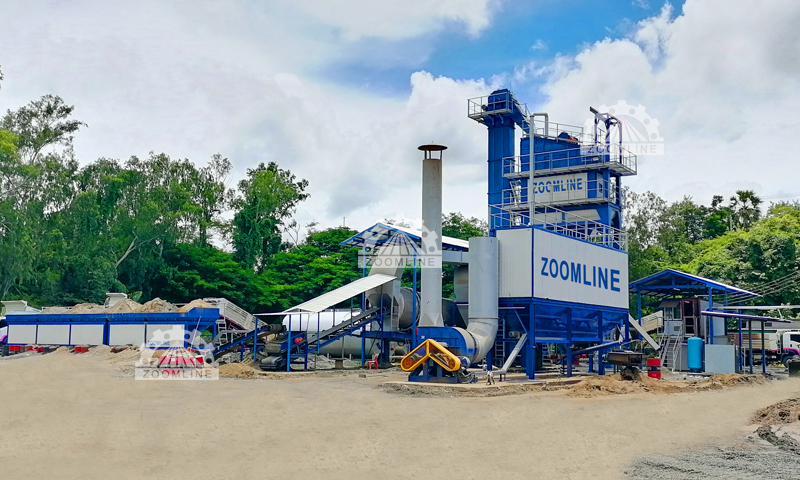
How to Choose the Right Dust Control System
When selecting a dust control system, the following factors should be considered comprehensively:
Production scale and capacity: Large asphalt mixing plants (annual output of over 100,000 tons) generate higher dust emissions and require baghouse dust collectors with larger airflow handling capacity; smaller plants can opt for a combination system of cyclone dust collectors and baghouse dust collectors based on specific needs.
Local environmental standards: Dust emission limits vary by region (e.g., some areas require emission concentrations ≤10 mg/m³). Equipment must be selected to comply with local regulations to avoid retrofitting requirements later.
Dryer fuel type: Dryers using fuels such as coal powder or heavy oil produce dust with higher oil content and viscosity, requiring oil-resistant and wear-resistant filter bags (e.g., fluorocarbon filter fabric); Dryers using natural gas produce dust with simpler properties, and standard filter bags can meet the requirements.
Budget and return on investment: Baghouse dust collectors have higher initial investment costs but offer stable operation and a long service life; water spray systems have lower costs but require frequent maintenance and have limited effectiveness. Companies should consider long-term operational costs and select the most cost-effective solution.
Cost-Benefit Analysis of Dust Control Investments
Although dust control equipment requires a certain amount of initial investment, the long-term benefits far outweigh the costs:
Reduce fines and legal risks: Compliant dust emissions can avoid fines from environmental protection authorities (single fines may reach hundreds of thousands of yuan) and mitigate the risk of production shutdowns, ensuring production continuity.
Improved equipment efficiency and product quality: Reducing dust-related wear and tear on equipment can lower maintenance costs by over 30%; stable dust control ensures the accuracy of asphalt mixture ratios, increases product合格率, and enhances market competitiveness.
Improve corporate image and employee cohesion: Companies that meet environmental standards and provide a good working environment are more likely to gain government support and customer trust, while also reducing the incidence of occupational diseases among employees, lowering medical expenses, and enhancing employee satisfaction and loyalty.
Conclusion and Call to Action
In summary, effective dust control is key to achieving environmental compliance, ensuring production safety, and enhancing operational efficiency at asphalt mixing plants. By selecting appropriate control methods (such as baghouse dust collectors, enclosure measures, etc.), strengthening daily maintenance, and combining standardized operating procedures, companies can effectively control dust pollution within reasonable limits, achieving a win-win outcome for both economic and environmental benefits.
Controlling dust pollution is not an unattainable goal but something every asphalt mixing plant can achieve. If you are struggling with dust issues or wish to upgrade your existing dust control system, please contact us. We have a professional technical team that can provide customized dust control solutions tailored to your production scale, local regulations, and specific needs, helping your business easily address environmental challenges and move toward a more sustainable future.

